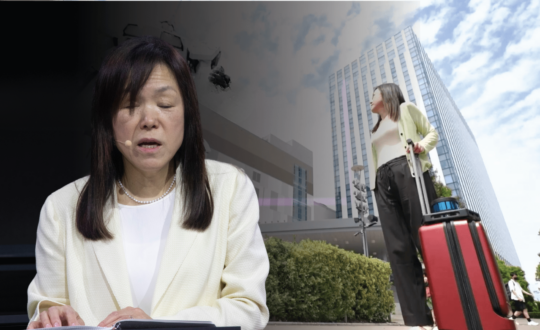“AI acts as a powerful ally to human safety inspectors, providing critical insights and alerts. However, the human element remains indispensable for engagement and intervention, ensuring that a culture of care prevails in the workplace,” says Perry Lopez, a safety subject matter expert at Shell.
In a world driven by AI advancements, the quest for innovation that can improve safety and security is now gaining significant momentum. One innovation lies at the intersection of artificial intelligence and industrial safety, where Machine Vision technology is playing a pivotal role in keeping workers safe. A recent discussion on “AI for Good Perspectives” delved into the work of a Shell Ventures company, Detect Technologies, and their co-developed T-Pulse safety monitoring technology, designed to revolutionize worker safety on industrial sites.
“What we’re doing is to enhance employee safety… it’s all for the good, it’s all to identify unsafe situations and unsafe behaviors…” said Amy Challen, General Manager at Shell, on the ethical considerations of AI.
Watch the full video here:
Where AI Meets Safety: Introducing T-Pulse
As Daniel Raj David, the CEO of Detect Technologies explained, at its core, T-Pulse harnesses the power of artificial intelligence to analyse visual data from a myriad of sources using a sophisticated AI platform. This includes fixed cameras, drones, and robots. The technology has the ability to identify safety risks and promptly alert on-site personnel for both immediate tactical intervention and strategic safety culture improvement.
Perry Lopez, a safety subject matter expert at Shell, shared insights into how this technology has transformed their approach to safety. He highlighted how AI-enabled systems like T-Pulse have empowered them to be in several locations simultaneously. By receiving real-time alerts about unsafe acts and conditions, safety experts can proactively engage with workers, leading to safer and smarter work practices.
“Being able to get alerts of unsafe acts and conditions really puts us at an advantage to be able to go out and engage with the workers and with the folks in the field…” said Lopez.
Lopez emphasized its effectiveness in reducing “line of fire” incidents, including potential injuries from collisions, falling objects, and unsafe conditions in confined spaces or at elevated heights. Machine Vision technology helps predict and prevent these hazards, ensuring the safety of workers on industrial sites.
Going into a deeper dive into the technology behind T-Pulse, it is a centralized cloud-based AI platform that seamlessly integrates with various visual data input devices. This platform, honed through years of learning from thousands of devices, analyses data to produce actionable insights. These insights range from tactical recommendations for safety supervisors to strategic statistics that empower site management to improve safety culture comprehensively.
Human Oversight in Safety
Amy Challen, General Manager Shell, addressed the ethical and legal considerations associated with implementing such technology. She emphasized that the primary goal is to enhance employee safety. While the system utilizes CCTV footage, it employs face-blurring techniques to protect individual identities. Amy stressed the importance of staff consultation and compliance with data deletion requirements to respect individual rights.
Challen emphasized that AI enhances human capabilities rather than replacing them. AI provides analysis and information, while humans make interventions and decisions based on that data. The approach centers around a “human in the loop” model, combining AI’s data-driven insights with human expertise to optimize safety practices.
It is sure that AI will not replace humans in the safety process. Instead, it acts as a powerful ally, providing critical insights and alerts. The human element remains indispensable for engagement and intervention, ensuring that a culture of care prevails in the workplace.
Raj explained how T-Pulse continues to evolve and improve over time. The AI system learns by analyzing vast datasets, identifying patterns, and recognizing equipment, people, and risks. This continuous learning process allows T-Pulse to go beyond simple object detection and predict complex scenarios effectively.
In conclusion, the discussion underscored the pivotal role of Machine Vision and AI in enhancing worker safety. It emphasized the synergy between AI technology and human intervention, with ethics, data privacy, and a culture of care at the forefront. As a Shell Ventures invested company, Detect Technologies’ T-Pulse technology exemplifies how innovation can make workplaces safer and align with the broader goals of AI for Good.
















